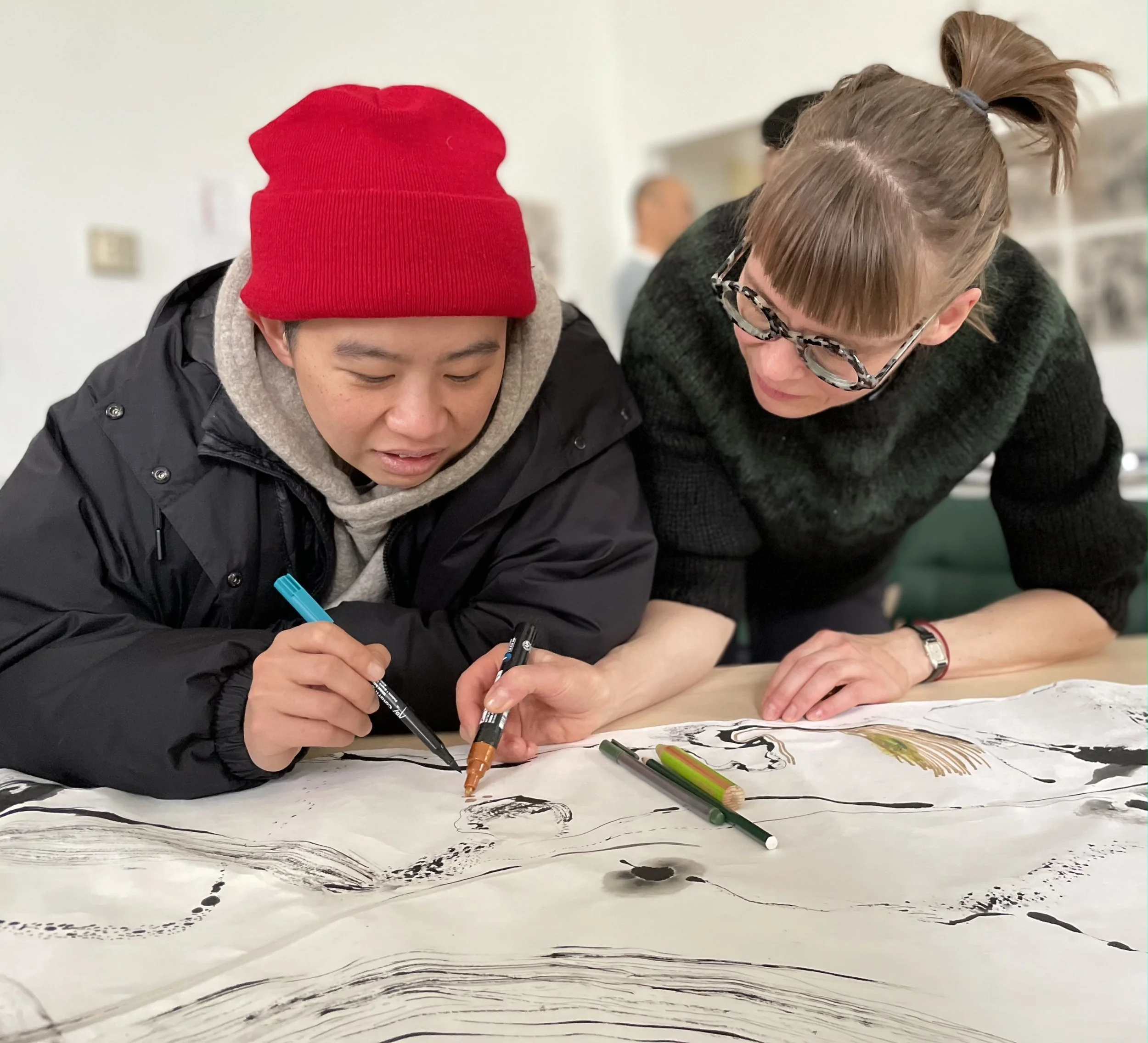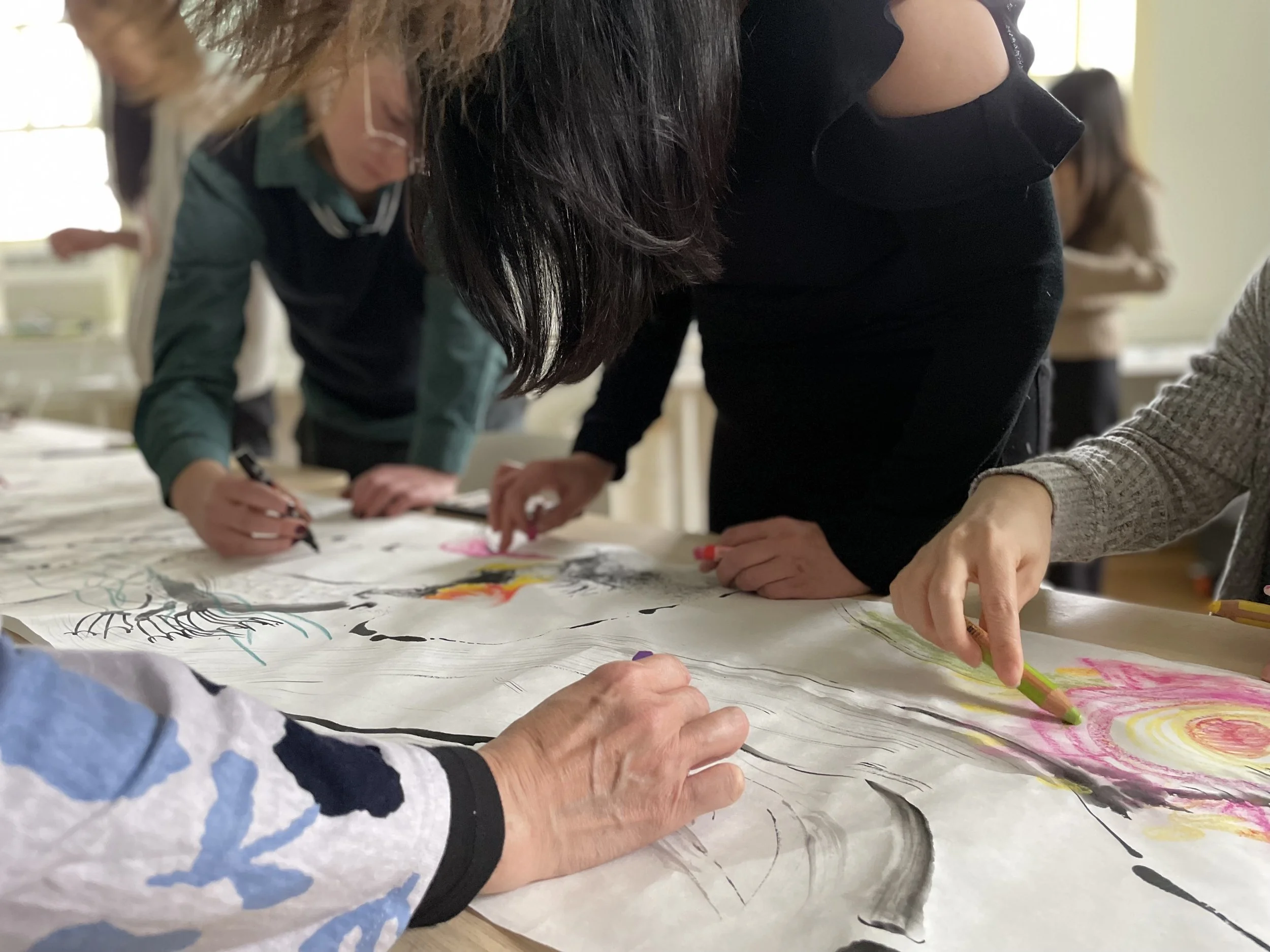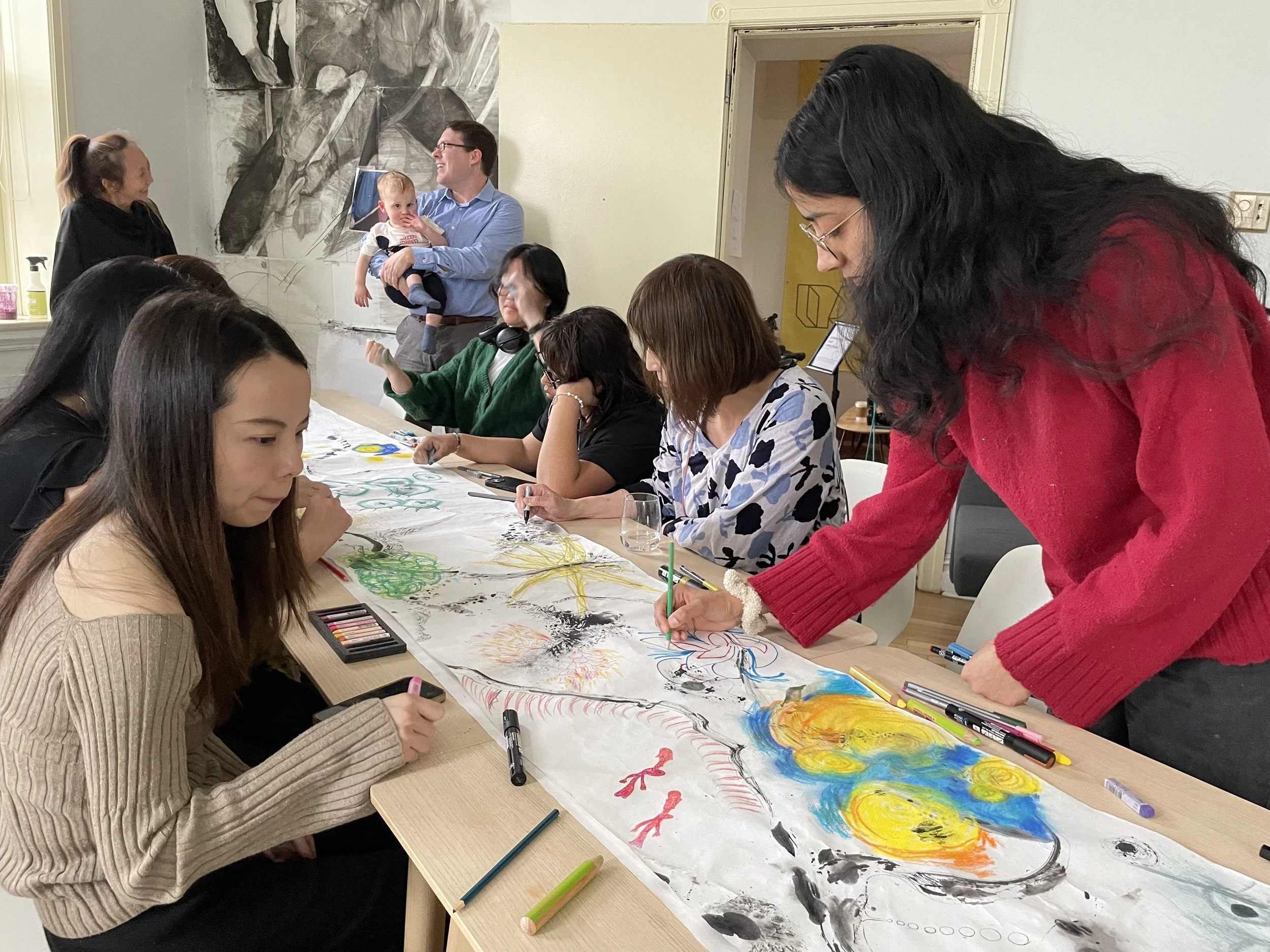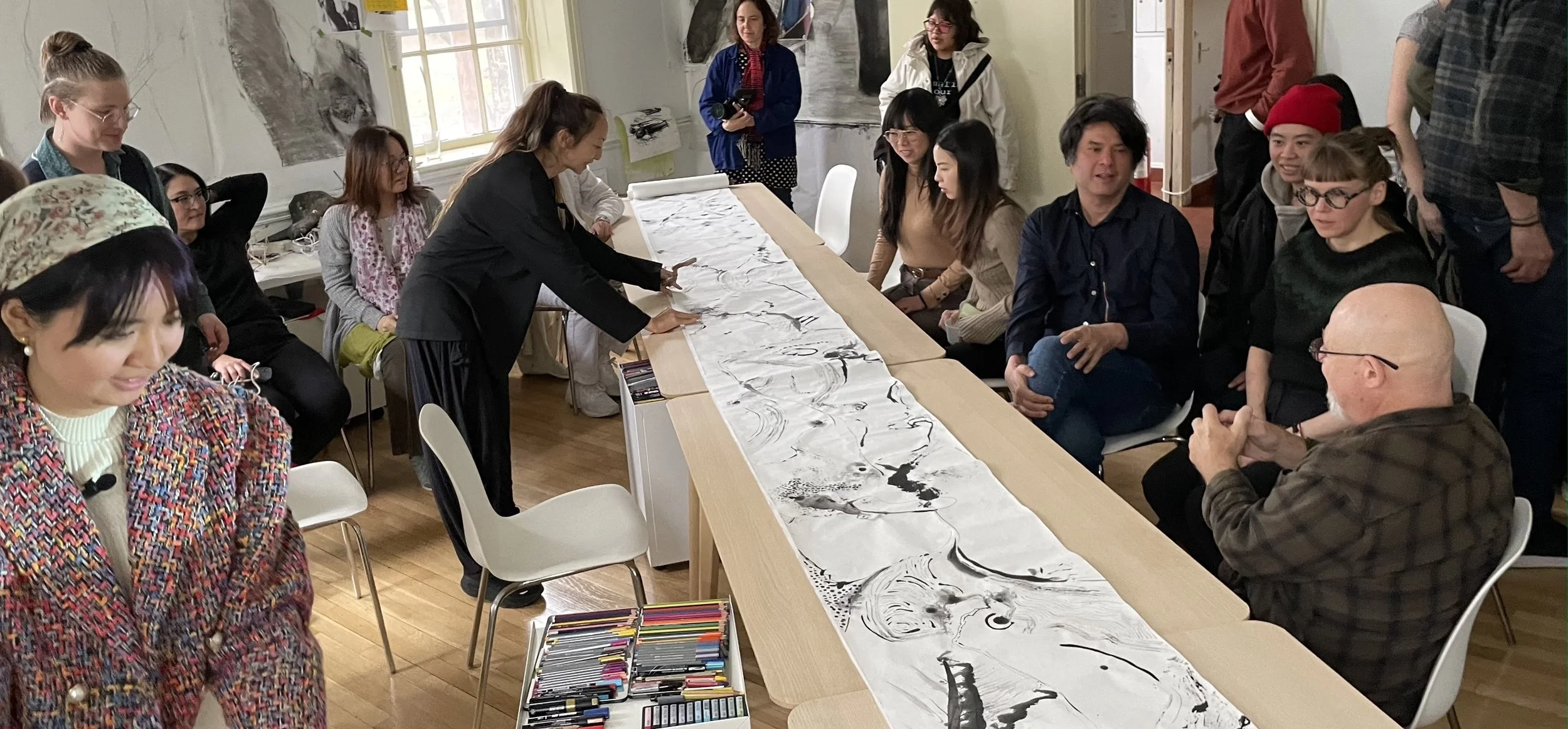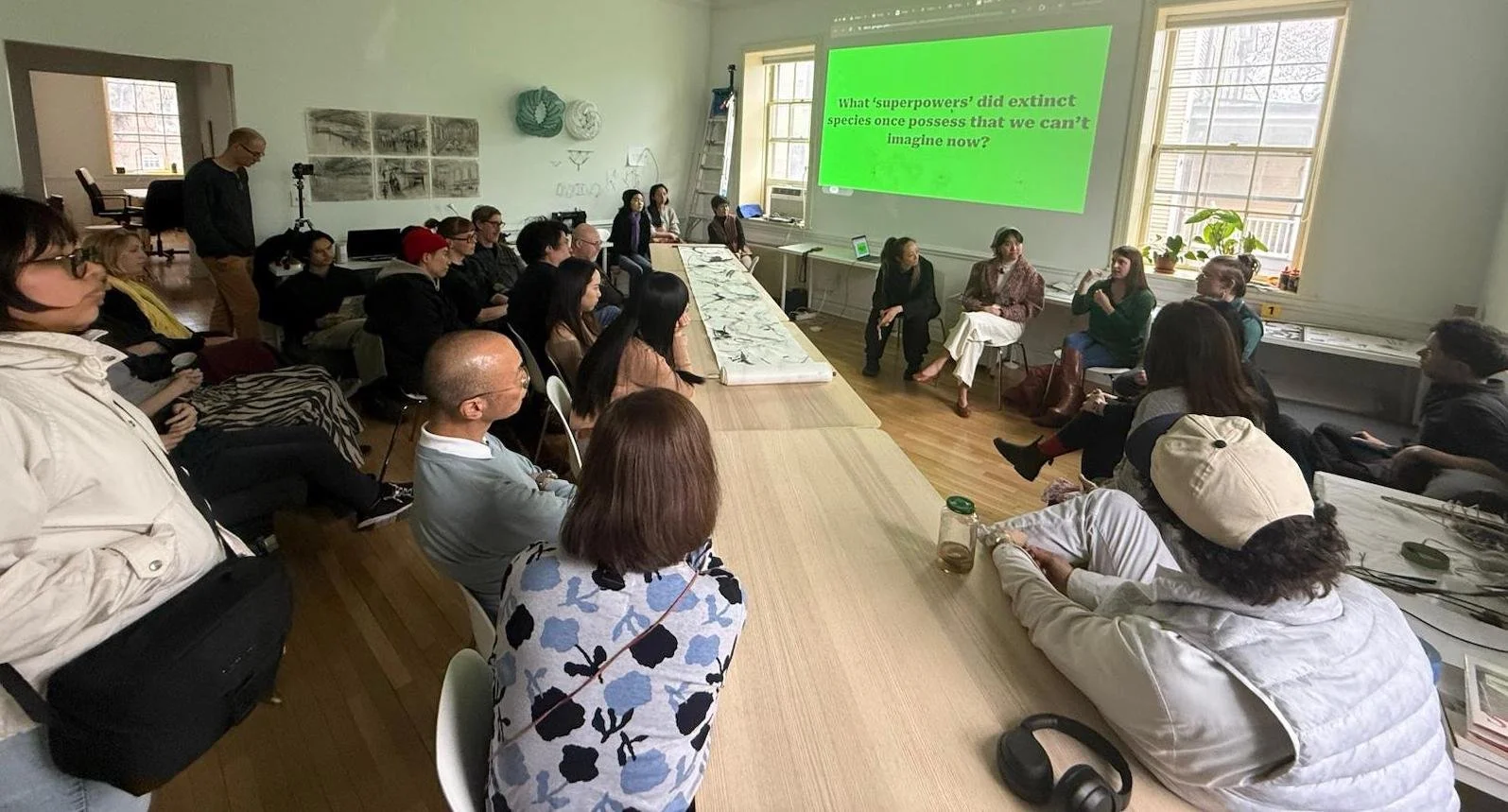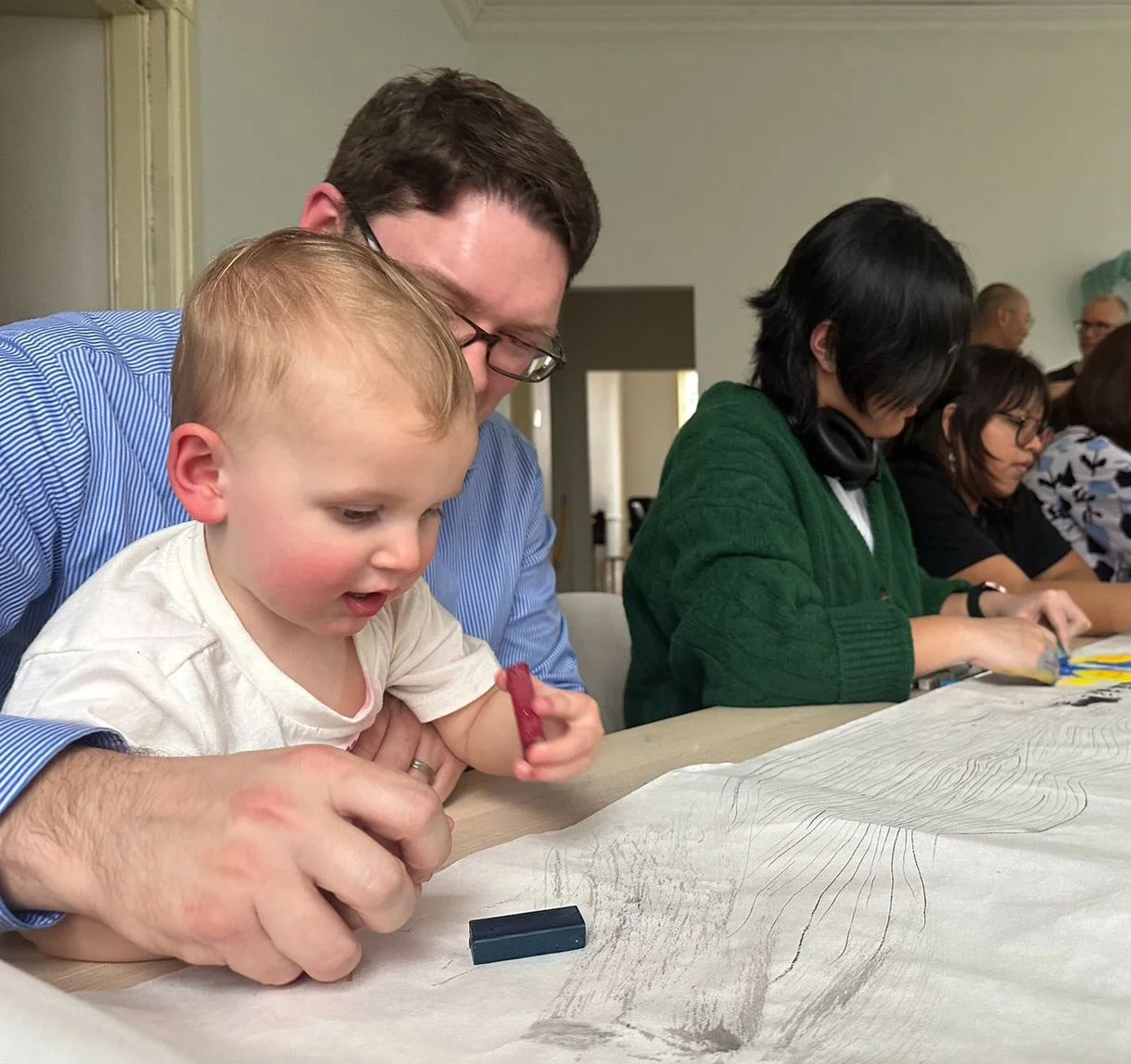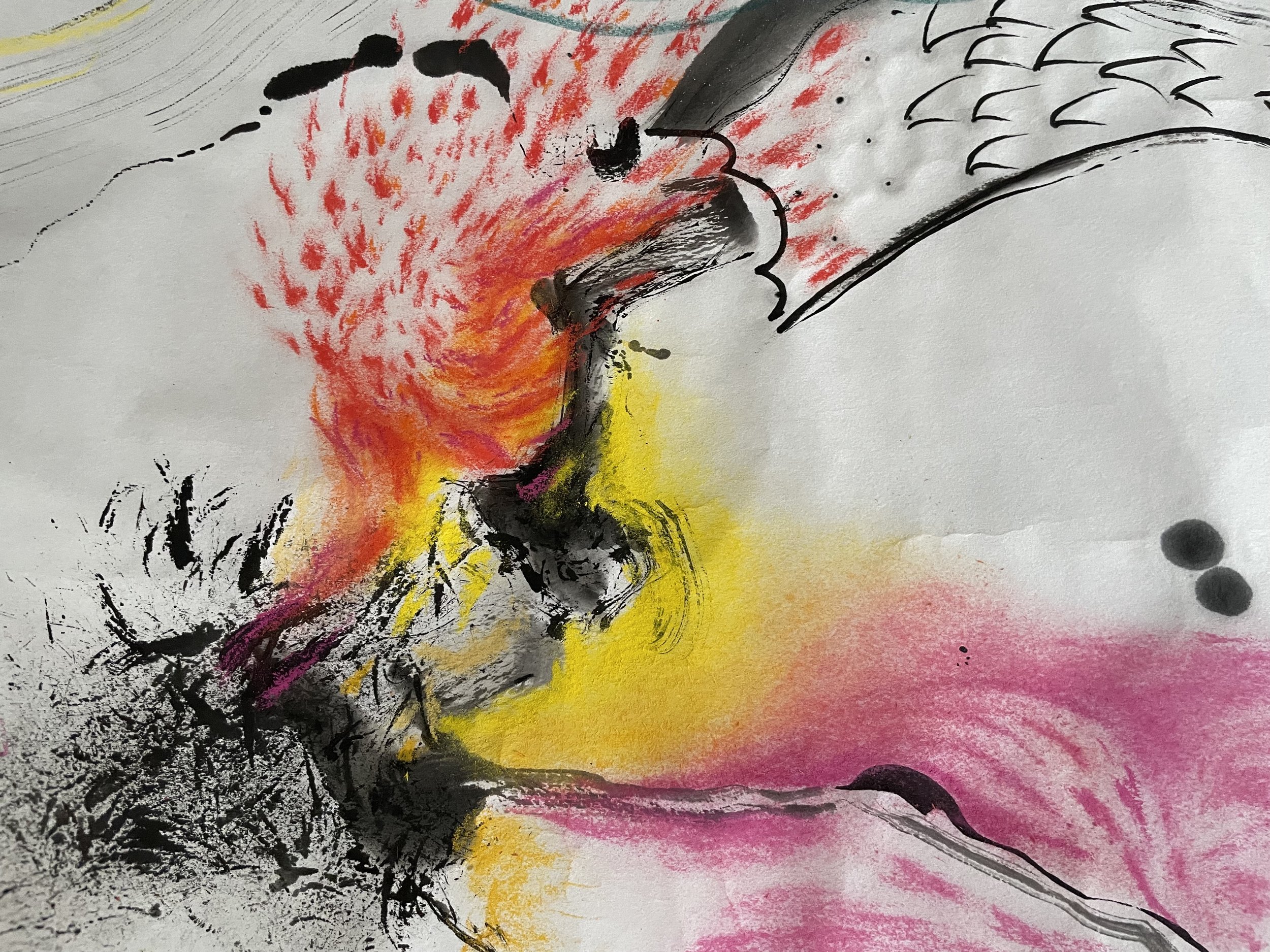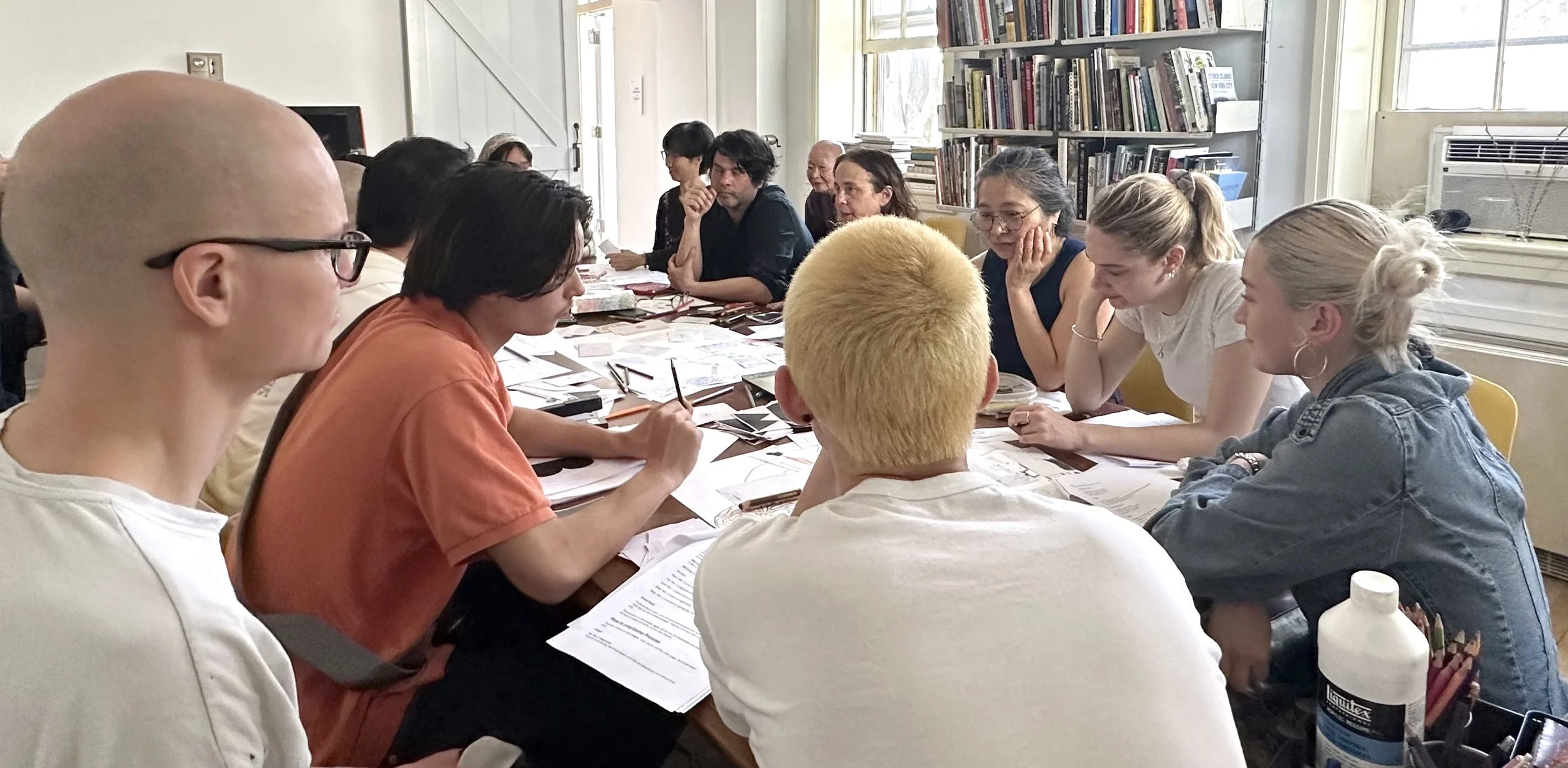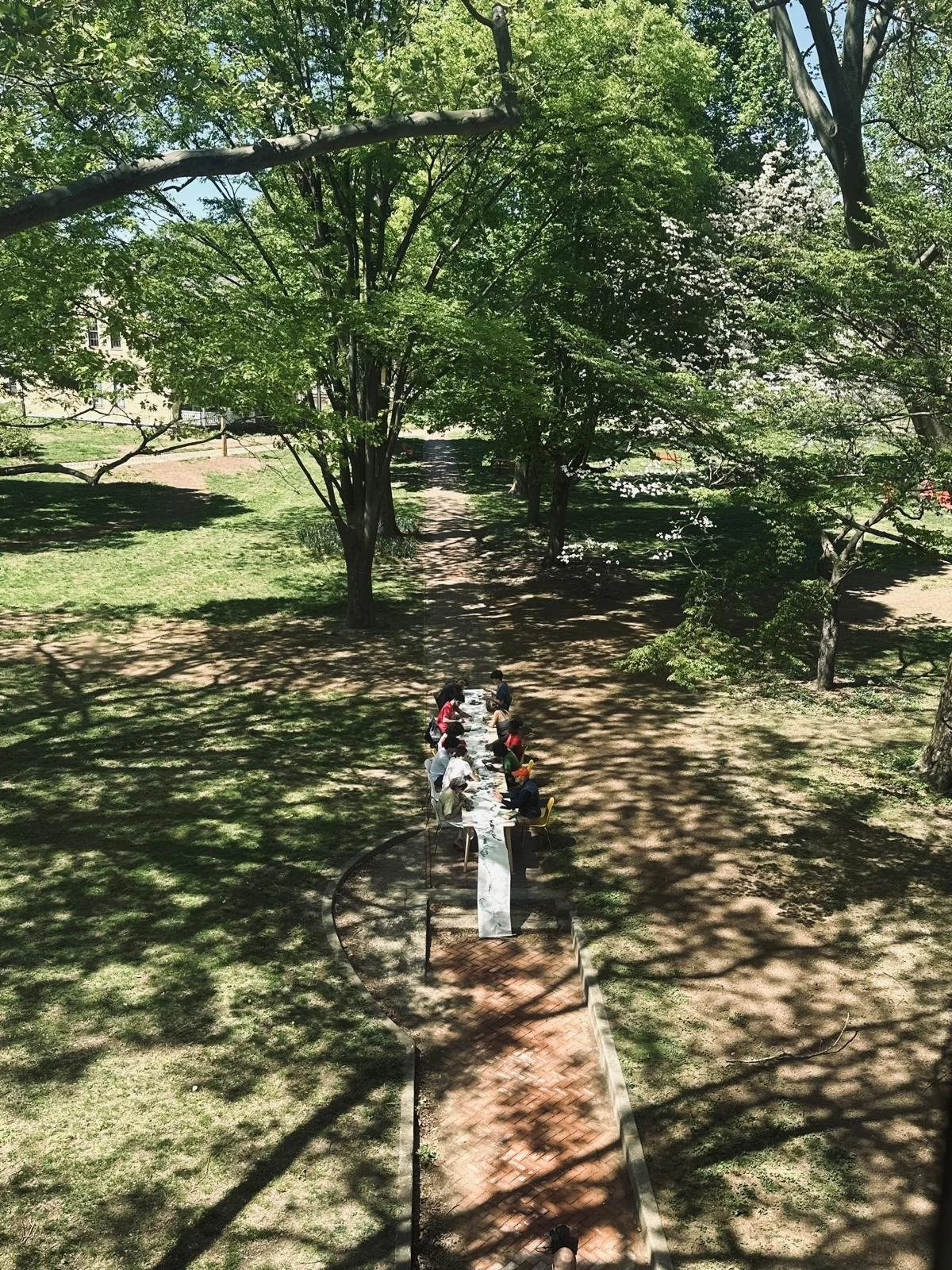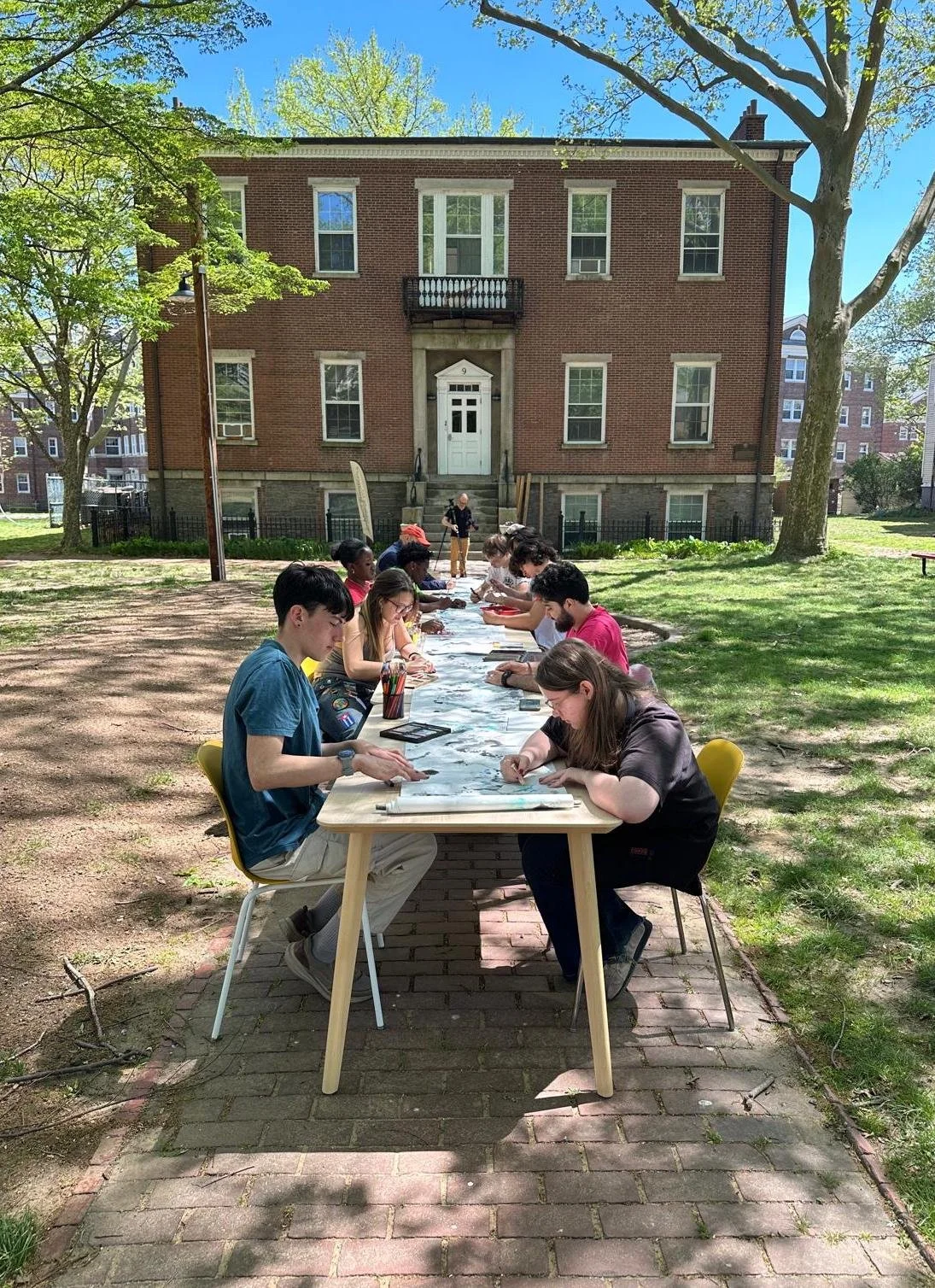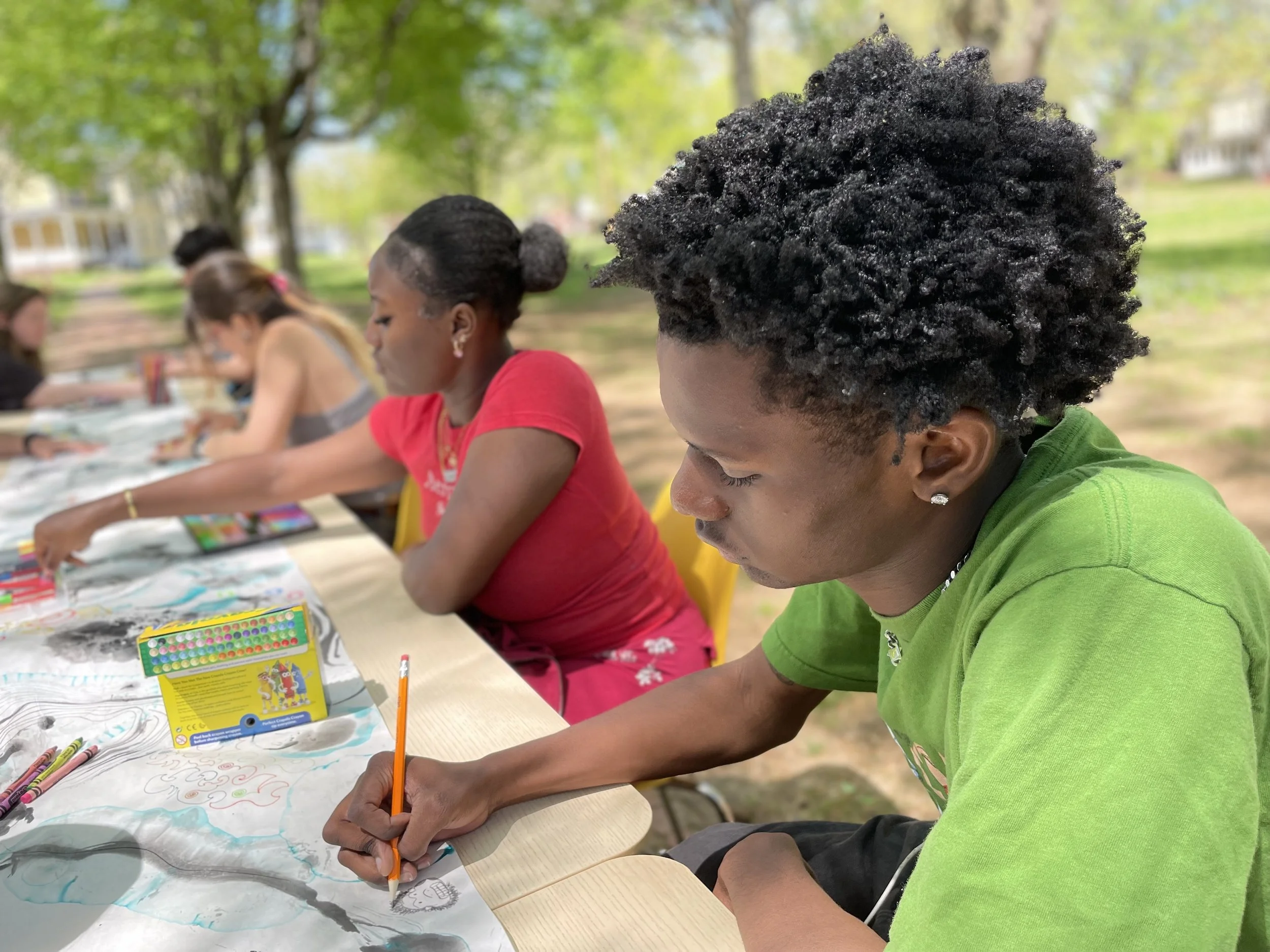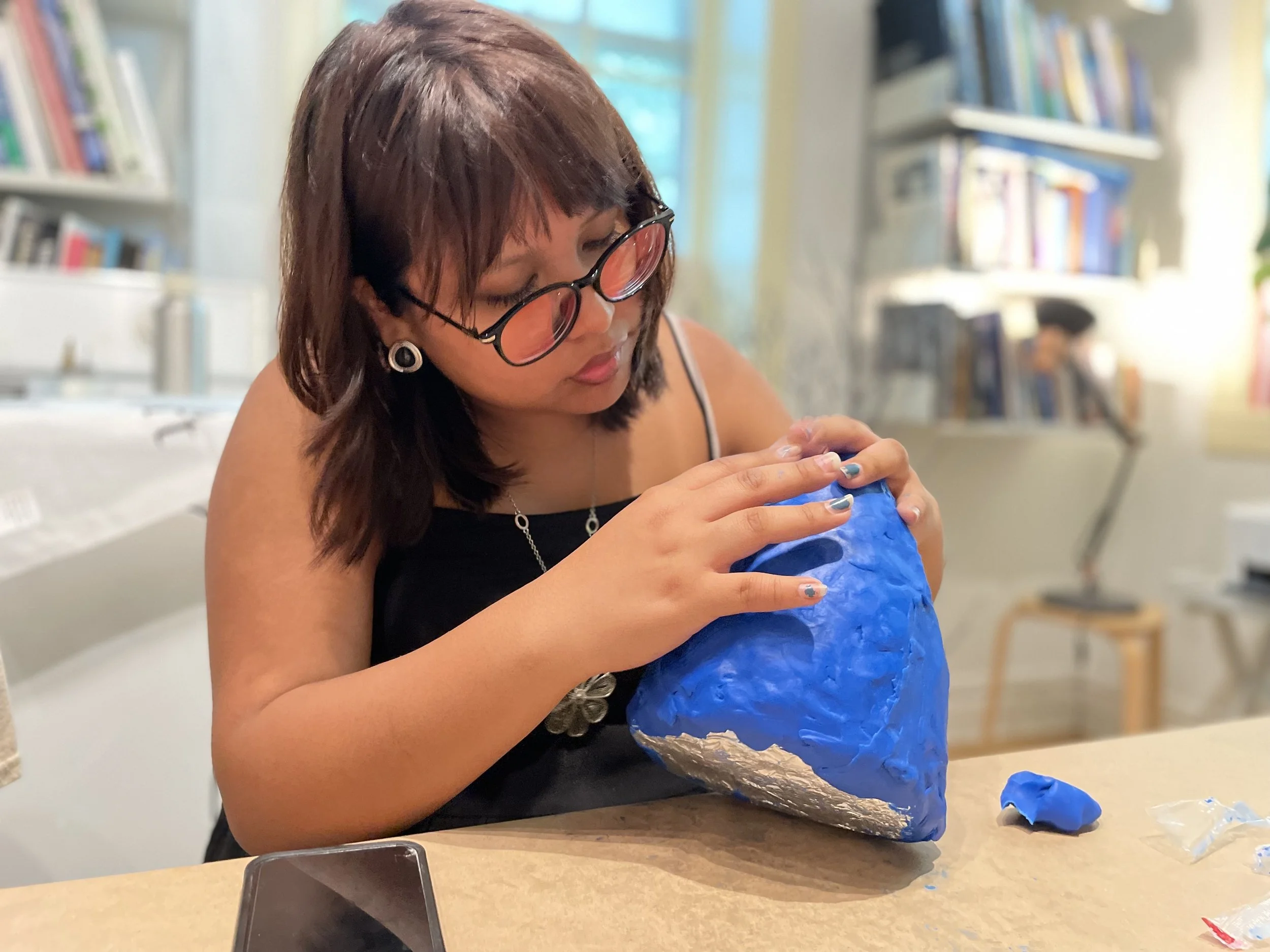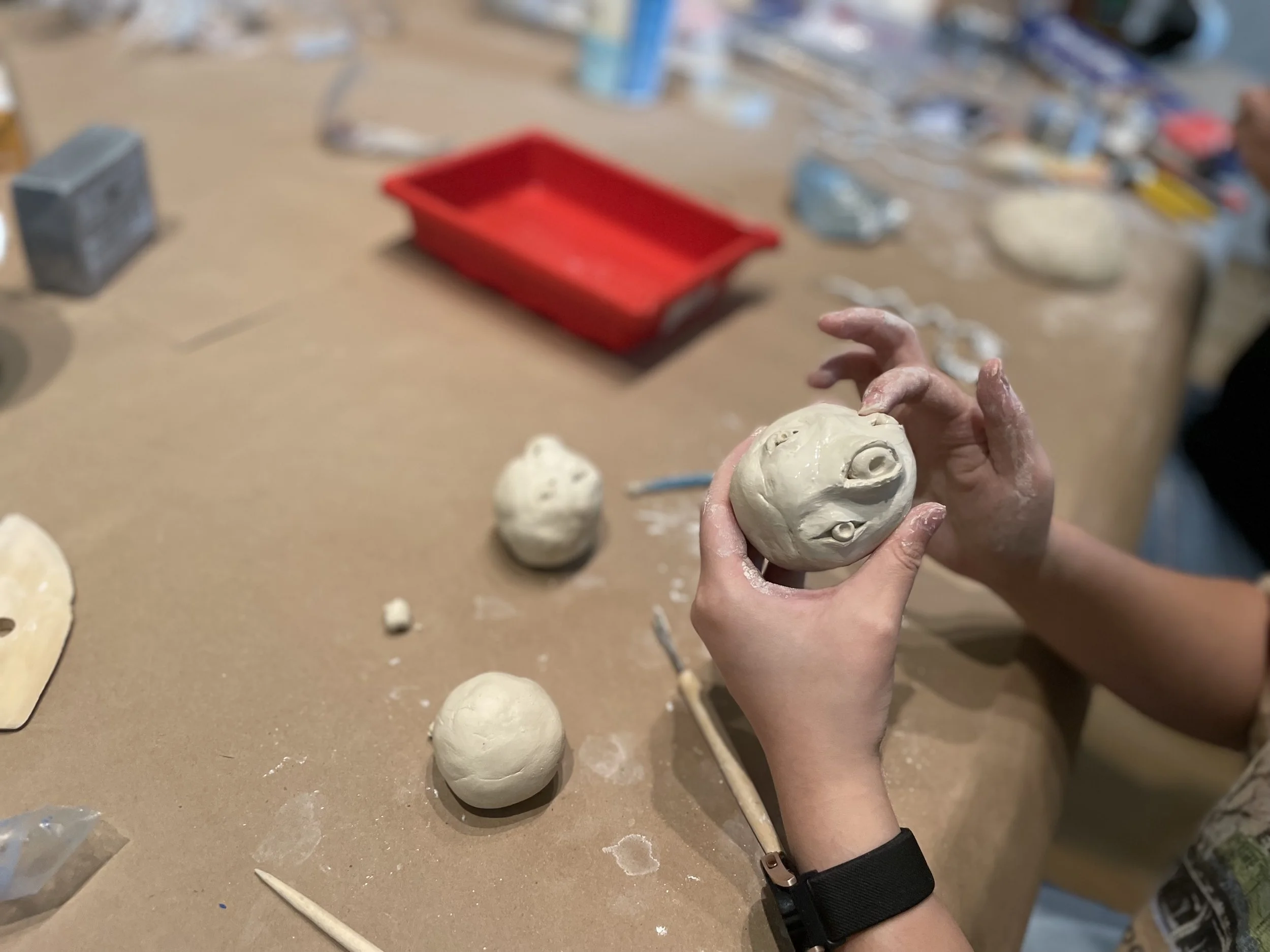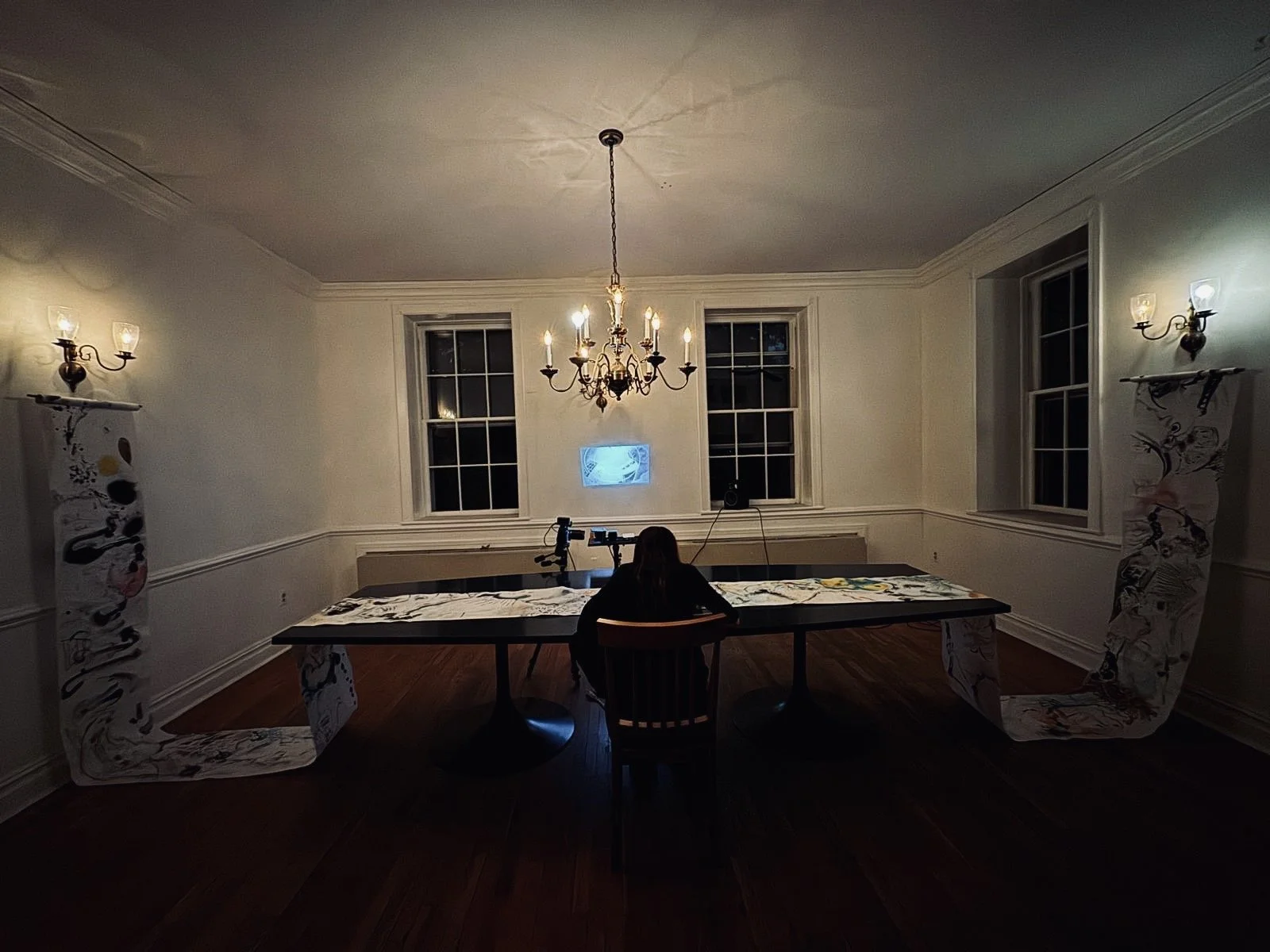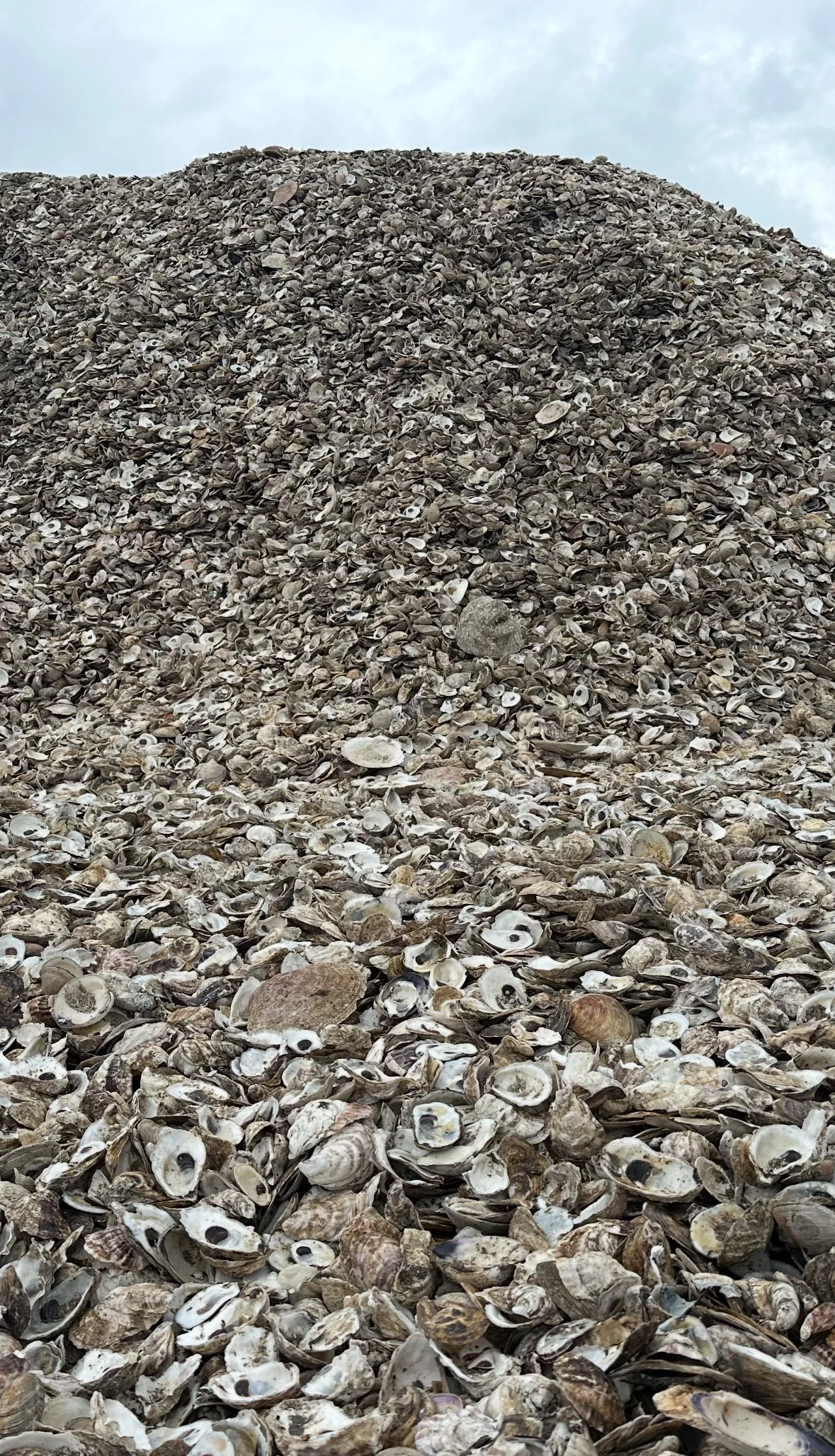Memory Portal
Institution The Institute for Public Architecture
Format Participatory drawing workshop, world-making games, performance, sculpture, sound
Year 2025
Location The Block House, Governors Island, NYC, US
Led by Amy Cheung
Diagnosis Ecological Amnesia
Amid accelerating ecological collapse, many struggle to grasp the urgency and scale of the planetary crisis, hindered by climate paralysis and data fatigue. Scientific metrics—though essential—often fail to inspire meaningful action, even as 3.6 billion people now live in regions highly vulnerable to climate change (IPCC, 2023), facing the risk of irreversible ecosystem collapse if current trends continue.
This emergency is deepened by ecological amnesia: a severance from planetary rhythms and deep-time awareness, driven by extractive short-term thinking. Symptoms range from outright climate denial to sensory numbness toward environmental feedback—wildfires, acidified rain—and the commodification of ecosystems.
This rupture is symbolized by “The Extractor-Bill,” a sculpture embodying a force that monopolizes time, erases ancestral knowledge, and reduces nature to mere transactional value. The result: fractured stewardship, where grief festers in silence, and human agency is outsourced to systems of depletion.
Cultural Treatment Planetary Imagination
Memory Portal intervenes through mythopoeic repair—a participatory ritual that transmutes data into story and grief into action. Its three acts—summoning mythic beings (collaborative drawing), battling the elements (world-making game), and awakening Will’s consciousness (performative act/ ritual) —reconfigure ecological engagement.
Participants exorcise climate anxieties as “monsters,” redesign conflict into symbiosis using the elemental dynamics of fire, wood, metal, soil, and water, and resurrect sensory literacy through imaginative glacial whispers, fossilized rain, and the evolving soundscapes of the Earth itself. Will, the oyster-lion hybrid, acts as a living interface, translating environmental data into tactile memories, while the Memory Engineer channels collective creativity to repair his severed senses. By merging speculative storytelling and gameplay, the project rewires neural pathways for planetary intimacy, replacing extraction with reciprocity. Sustained engagement cultivates temporal symphonies: deep time collapses into the present, stewardship becomes multispecies dialogue, and resilience emerges through mythic entanglement—not control. To be continued.
Act I Summoning Our Creatures
Collaborators: Dr. Kerry Reid (Research Scientist, Yale University), Griffin Deans (Environmental Engineer and Biologist, SUNY College of Environmental Science & Forestry), Ruoyang Zheng (Storyteller, Here On Earth).
Participants collaborate with an artist, a research scientist, a mythological storyteller, and an environmental engineer to explore aquatic collapse through the myth of Gong Gong—the Chinese water god whose rage once flooded the world. This ancient narrative anchors discussions on climate change, sea-level rise, pollution, and the genetic resilience of marine life, interweaving themes of human domination, coexistence, and adaptation.
Guided by these experts, the group co-creates a scroll merging ink and water to depict three speculative lifeforms: the god-like, the hybrid, and the adaptive. Drawing on scientific data, mythic storytelling, and environmental engineering principles, participants layer ink washes with symbols of ocean acidification, genetic transformation, and ancestral flood myths.
The resulting scroll becomes a collective vision of resilience—where myth and contemporary climate crises converge, charting life’s uncanny ability to mutate, endure, and reimagine itself amidst planetary crisis in the Anthropocene’s wake.
Act II Battle of The Elements
Collaborators: Dabu Lyu and Herman Fang (NYU Game Center)
This gaming workshop reimagined ecological strategy through the ancient Chinese Wuxing system (wood, fire, earth, metal, water), inviting participants to design hybrid elemental entities and speculative actors. Players crafted collectible cards and immersive worlds depicting mythic problems—and their solvers: plastic-digesting microbial swarms, mycelium-grown structures, villagers managing fungal networks, and guardians harnessing “moon-energy” from swing-patterned caves. These were embedded in settings like a Zoomie-inhabited Titanic or radioactive forests.
Teams confronted ecological crises—such as plastic-choked oceans, deforestation, and mining scars—through timed collaborative battles guided by Wuxing principles. They deployed mutual generation (e.g., water nourishing wood to revive logged landscapes) or restraint (e.g., fire melting metal to halt extraction machinery) to envision alternative futures.
Strategies ranged from engineering earth-metal fungal detoxifiers to weaponizing controlled burns as ecological resets, while debates emerged over whether to escalate wildfires as purges of invasive systems. Bridging speculative biotech with real-world dilemmas, the session reframed planetary care through Wuxing’s non-linear reciprocity—treating elemental relationships as cyclical dialogues rather than binary fixes.
Outcomes revealed how ancient frameworks could redefine harmony, positioning interdependence—Zoomies coexisting with toxic ships, lunar rhythms powering ecosystems—as a form of radical ecological diplomacy and expanded imagination.
Act III Awakening Will
Collaborators: Mauricio Gonzalez and seniors at The Urban Assembly New York Harbor School
In the final act, high school students from Harbour School embodied the role of Memory Engineers. Guided by the beginner’s mind and a shared collective unconscious, they reawakened Will’s senses—glacial whispers, wildfire screams, fossilized rainfall—tuning him to deep time, where millennia collapsed into moments and erosion became palpable through creatures and elements.
This awakening unfolded gradually, through sound and vision, revealing how Bill—Will’s brother, the Extractor—had monopolized time, erased ancestral wisdom, and ultimately decapitated Will. The performance, staged at nightfall during a ceremonial dinner, culminated in a ritual: the Memory Keeper of the Forgotten—a figure guarding what history attempted to erase—unrolled the scroll across Will’s eye until it vibrated with shock and came to life.
The project reframed environmental metrics as memories eclipsed by short-term interests, casting storytelling as a form of speculative repair, and Will as a vessel for sensory truths—reclaiming agency from silence, unweaving ecological grief, and reimagining futures unbound.
Could such hybrids—born of human yearning yet resonant with planetary rhythms—reconfigure stewardship in this fractured, dissonant age?
Sculpture Lab
Performance
Supported by
9th Annual NYCPS Office of Energy and Sustainability Project Grant (in the category of Sustainability & Climate Education) Billion Oyster Project, The Urban Assembly New York Harbor School, Here On Earth, Global Family for Love and Peace, Dr. Kerry Reid (Research Scientist, Yale University), Griffin Deans (Environmental Engineer and Biologist, SUNY College of Environmental Science & Forestry), Ruoyang Zheng (Storyteller, Here On Earth), Dabu Lyu and Herman Fang (NYU Game Center), Mauricio Gonzalez and seniors at The Urban Assembly New York Harbor School, Erkka Nissinen - Video Design, Oliver Lyons - Sound Design, Lu Chih Lan, Alexis Raskin, Ruoyang Zheng, Luka Lyons.

